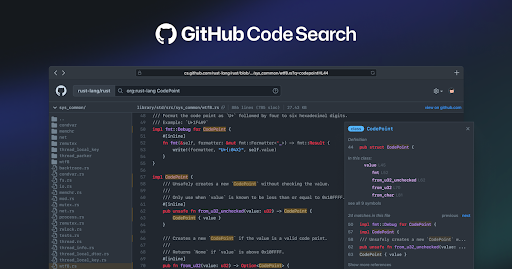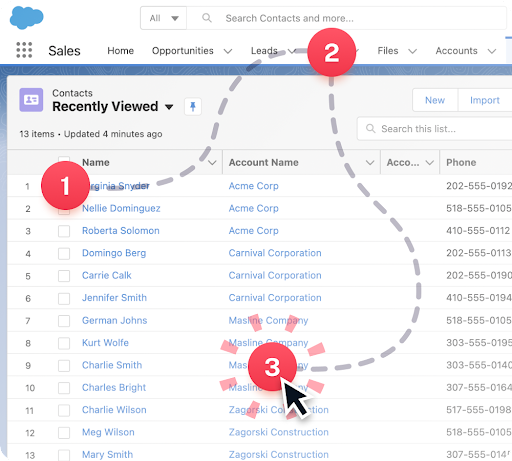8 Best IT Documentation Tools for DevOps in 2024
Definition of IT Documentation Software
Whether it be documenting a product or describing internal IT processes, IT documentation enables users (internal or external) to be able to comprehend your software. It’s often presented in written format but includes multimedia content such as video and audio.
IT documentation provides user help and also mitigates potential legal action as a result of misuse of your products. When software is properly documented, this increases usability, retention, and overall customer lifetime value because customers are getting more from your product.
Typically, IT documentation might include software and other technical specifications, user guides and manuals, reference docs, and process documentation. If something about your software product might be relevant to a user or other stakeholder, it’s a good idea to document it.
The Role of IT Documentation in DevOps
DevOps is all about reducing traditional siloes, and you need proper IT documentation to achieve that lofty aim. So, the role of IT documentation in DevOps involves documenting the parts of the software that pertain to the development and operations teams or both teams combined if that is how your organization is structured.
Since DevOps is the province of high-velocity, agile teams who wish to disrupt more traditional methods of developing software, IT documentation is vital for teams aiming to reach these goals. It reduces misunderstandings, enables team members to collaborate, and helps educate customers and other users.
Understanding DevOps Principles
In order to properly appreciate the role of IT documentation in DevOps, it is first necessary to understand some core DevOps principles involving a shift in the culture of the way your company operates.
Collaboration – instead of focusing exclusively on their own domains, development and operations teams collaborate closely under the DevOps model and are often integrated. Communication and feedback are key to the proper functioning of the DevOps team, with the shared goal of developing software products that are fit for customers.
Continuous improvement – DevOps teams continuously experiment with the product and try to reduce waste with agile development practices. This principle keeps costs down and emphasizes the speed of delivery.
Customer-centricity – it sounds obvious, but DevOps produce products that are closely aligned with customer needs based on short feedback loops, which means that you are continually monitoring customers and shipping releases based on the insights you gather.
Automation – DevOps teams, make full use of automation during the software development lifecycle to ensure they are conserving resources and relieving the need for developers to complete tasks manually.
How IT Documentation Supports DevOps
So, if you’re following these core principles in your DevOps team then you will need to use IT documentation to support your efforts. For example, suppose you make changes in your software product (or choose not to change it) to suit your customers’ needs better. In that case, you’ll need to document exactly why you made these decisions so future developments don’t undermine your efforts.
Equally, DevOps teams need to make decisions concerning the infrastructure and development of their software product. In order for engineers and programmers to work most effectively, these decisions need to be documented to help stakeholders understand how the system works.
Finally, DevOps teams must deliver software that is customer-centric and continuously evolving, so for that, you need effective documentation in the form of user help, guides, and references.
Schedule a demo with one of our experts to take a deeper dive into Document360
Benefits of Effective IT Documentation in DevOps
Here are some of the key benefits of IT documentation in DevOps.
Makes Processes More Transparent
Consider first that when you document your DevOps processes, they become more transparent for everyone involved. Internal documentation is vital for the healthy functioning of your software team, as users can access key information about configurations, specifications, and other technical aspects.
Improves Collaboration Between Development and Operations
Traditionally, development teams and operations teams have worked in siloes, resulting in clunky software decisions, with each team focusing on different priorities that fail to account for the needs of the end user. IT documentation makes priorities explicit, makes projects more visible, and therefore improves collaboration.
Increases Customer Satisfaction
When you document the product properly, customers are increasingly satisfied with the experience you deliver. Development and Operations are coordinated, so the development and delivery of code results in better products that also satisfy customers. IT documentation improves every aspect of software development.
Ensures the Product is Used as Intended
Specifically, customer-focused documentation increases the likelihood that the product is used as intended. When developers and operations personnel are on the same page, customers are more successful, and DevOps can achieve its objectives through appropriate documentation.
Key Features to Look for in IT Documentation Software
Now, we’ll examine the key features to look for in IT documentation software.
Centralized Documentation Repositories
When considering the appropriate IT documentation tool, the central feature is to have all of your documentation centralized in a repository to facilitate easy search and discovery. While documentation undoubtedly needs categorization and tagging, a central portal is essential for a great user experience.
Content Creation
You need the ability to create appropriate content with your IT documentation software, which means drafting articles and inserting relevant multimedia files like videos and images. Content creation is a process that needs to be fully supported by the software, enabling you to organize content into a hierarchy, add tags, and SEO.
Version Control and Collaboration
It’s very likely that you will run through multiple versions of your software documentation, and multiple authors will collaborate on its developments. Your software should be able to support version control, highlight changes and revert back to previous documents, as well as facilitate collaborators to review and edit each version.
Search
Once your documentation is published, you need to search through content to find the relevant information quickly. Advanced search enables users to narrow down their search parameters and sift through large numbers of documents easily. Search should be tolerant of typos and natural language.
Access Control
Different users need different permissions to access your documentation, and you might want to make it private for internal users or other special parties. Access control means that users might require a login, two-step verification, or be located at a particular IP address in order to view your content.
Integration
Integration with other tools can often be essential for your IT documentation software because you are likely working with other systems to develop documentation and help your users. Users don’t want to switch back and forth between different tools when the same process could be achieved with an automatic integration.
Security
You need to be sure that your data is tightly controlled and secure by the companies hosting your documentation, for the sake of both your DevOps team and your end users. It’s best to choose a vendor with a solid track record of privacy and security.
Factors to Consider When Choosing IT Documentation Software
Next, we’ll look at the top factors to consider when choosing your IT documentation software for your DevOps team.
Ease of Use
You’ll want to pick a software solution that’s easy to use to encourage adoption by your DevOps team. While some options will require more technical knowledge to learn than others, you can usually find a solution like Document360 that caters to different skill sets. Since DevOps goes hand-in-hand with agile methodologies, it’s imperative that you choose an IT documentation tool that your team can learn swiftly.
Setup Cost & Licensing Options
Different types of IT documentation software require various setup costs and licensing options, with the most accessible being a software-as-a-service(SaaS) model that you can license through a monthly subscription. Desktop installations require the biggest initial setup costs and local servers, so many companies opt for SaaS for their IT documentation software.
Security Features and Compliance
Most companies have specific requirements for security features and compliance, which is why it’s important to make sure your solution is compliant with security protocols and data privacy laws such as HIPAA and GDPR.
Support Services
Your software solution will be almost unusable without accompanying support services, which can include anything from onboarding to technical troubleshooting to ongoing product education. Make sure support services are part of your package; otherwise, you might be paying extra to outsource support to third parties.
Top IT Documentation Software Solutions for DevOps
At last, here are the top IT documentation software tools for DevOps as identified by us.
1. Document360

Our top choice for an IT documentation software solution for DevOps is our own Document360. Exceedingly agile and developed for technical teams, Document360 helps you instantly prepare and publish your own documentation in highly responsive knowledge bases.
Customization is intuitive and easy to accomplish, while analytics means you can adopt truly iterative development practices for your documentation. Integrations and extensions enable you to connect all your favorite apps so that creating documentation becomes much easier.
If you’re a DevOps team, Document360’s Markdown editor, category manager, health check metrics, and more can help you build documentation that suits the needs of your organization.
2. Bit.ai

Bit.ai is a workplace and document collaboration platform suitable for teams that want to create notes, documentation, wikis and more. You might consider Bit.ai for its intuitive user interface and extensive template gallery, and if you are intending to build internal IT documentation. Collaboration becomes easy with features such as mentions and real-time notifications, while collaborators can access different workspaces for content.
3. GitHub

Many DevOps teams are using GitHub, the developer platform, to build and host their IT documentation. The advantage of using GitHub is that your docs can sit right alongside the code, removing many barriers to writing and editing. With the ability to host on GitHub pages, organizations can publish content directly from GitHub and enjoy all the capabilities of this popular full-featured platform.
4. ClickHelp

If you’re a DevOps team you may also have heard of ClickHelp, which is a powerful online documentation tool for teams that want to host complex information. Highly specialized for documentation, ClickHelp is geared towards creating API documentation, developer docs, and software user guides. Unlike similar tools, ClickHelp is easy to use with unlimited version history and detailed auditing so you can always keep track of your IT docs.
5. Scribe

Scribe enables DevOps teams to create step-by-step guides which automatically capture any process through their extension. Content can be adapted to include text, redact sensitive information and more when creating documentation for your users. Scribe uses AI to generate your process overviews to save you massive amounts of time through recording your steps.
Click here to read more on Best IT Documentation Tools for DevOps in 2024